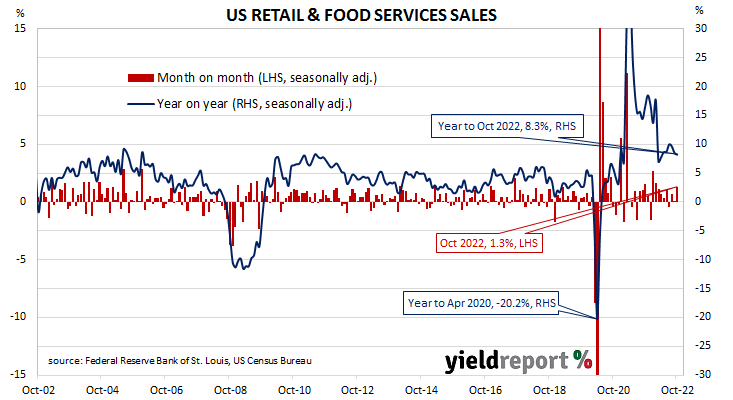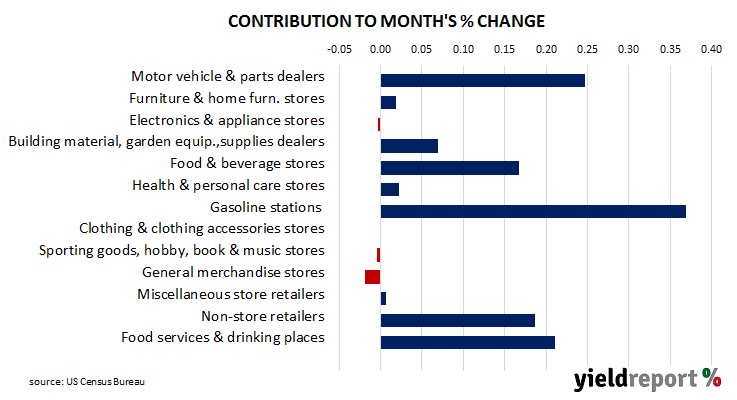Summary: US retail sales up 1.3% in October, greater than expected; annual growth rate slows from 8.6% to 8.3%; figures “point to still-strong consumer demand”; short-term Treasury bond yields up, longer term yields down; rate rise expectations firm slightly; rises in nine of thirteen retail categories; gas station segment largest single influence on month’s result.
US retail sales had been trending up since late 2015 but, commencing in late 2018, a series of weak or negative monthly results led to a drop-off in the annual growth rate below 2.0%. Growth rates then increased in trend terms through 2019 and into early 2020 until pandemic restrictions sent it into negative territory. A “v-shaped” recovery then took place which was followed by some short-term spikes as federal stimulus payments hit US households in the first and second quarters of 2021.
According to the latest “advance” numbers released by the US Census Bureau, total retail sales increased by 1.3% in October. The result was greater than the 0.9% increase which had been generally expected and well above September’s flat result. On an annual basis, the growth rate slowed from September’s revised figure of 8.6% to 8.3%.
“The data point to still-strong consumer demand which is something that the Fed is trying to reduce via its rapid monetary tightening,” said ANZ economist John Bromhead.
Shorter-term US Treasury bond yields moved higher on the day while long-term yields fell back considerably. By the close of business, the 2-year Treasury yield had added 4bps to 4.38%, the 10-year yield had shed 8bps to 3.69% while the 30-year yield finished 12bps lower at 3.84%.
In terms of US Fed policy, expectations of higher federal funds rates over the next 12 months firmed slightly. At the close of business, contracts implied the effective federal funds rate would average 4.125% in December, 30bps higher than the current spot rate, and then climb to an average of 4.685% in February 2023. May 2023 futures contracts implied a 4.915% average effective federal funds rate while November 2023 contracts implied 4.605%.
Nine of the thirteen categories recorded higher sales over the month. The “Gasoline stations” segment again provided the largest single influence on the overall result, rising by 4.1% over the month.
The non-store segment includes vending machine sales, door-to-door sales and mail-order sales but nowadays this segment has become dominated by online sales. It now accounts for 16% of all US retail sales and it is the second-largest segment after vehicles and parts.



